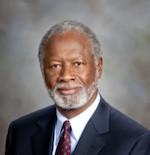The great majority of a panel of Ohio economists agree: Better rural broadband would be an economic boon to the state and it would help to reduce a growing gap between haves and have nots, according to a survey that was released Monday.
The results of the survey are likely to be grist for those who are trying to stop Republican leaders in the state Senate who want to strip money for rural broadband out of the state budget and replace it with a 5% income-tax cut.
Of the 23 economists surveyed by Scioto Analysis, 18 — or 78% — agreed that state spending on rural broadband would lift a lot of boats.
It might seem a no-brainer that access to the information superhighway is a way to juice productivity in places that previously depended on coal mining, brickmaking, heavy manufacturing and the like.
Economist Kevin Egan of the University of Toledo made exactly that point in comments that accompany the survey results.
“Reliable and fast internet connection everywhere is the modern equivalent of building the interstate highway system in the 1950s,” he said. “And note those highways are still FREE, funded with taxpayer dollars.”
But two well-to-do members of the Ohio Senate prefer to take the $250 million that Gov. Mike DeWine, a Republican, earmarked for broadband and instead use it to help pay for more than $1 billion in new tax cuts.
The GOP-led Ohio House included $190 million for rural broadband in its budget proposal.
Earlier this month, Senate President Matt Huffman, R-Lima, and Finance Chairman Matt Dolan, R-Chagrin Falls, made the changes as part of their proposed state budget. They also want to pay for tax cuts by cutting spending by the Ohio Department of Job and Family Services — which struggled mightily during the pandemic to process unemployment claims — and by cutting spending by the Ohio Department of Medicaid, which provides health care to the poorest 25% of Ohioans.
State financial disclosures make it hard to know how much lawmakers earn. They have to specify minimum to maximum ranges for individual sources of income, but the highest range starts at $100,000. That means the lawmaker could be making millions, but would only have to report that the income source was worth at least $100,000.
Huffman, a partner in a Lima law firm, made at least $210,000 in 2020, according to his disclosure.
Dolan is also a partner in a law firm and he co-owns the Cleveland Indians. His financial disclosure said he made at least $320,000 last year.
Huffman acknowledged that parts of rural Ohio lack good internet access. But he said that many people who live in those places might not have the equipment or technical sophistication to surf the World Wide Web the way millions of Ohioans have for decades.
“(S)imply providing broadband services does not mean that people who may be able to access that will or can access that,” the Capital Journal quoted Huffman as saying when he unveiled his budget proposal. “They still have to have a piece of equipment of some kind — a computer, iPad, whatever it may be — they have to know how to use it. They have to know what happens when it doesn’t work. And for people like me, I don’t know what happens when the thing doesn’t work, I have to ask somebody, and I assume a lot of other Ohioans are just like that.”
Trading broadband for tax cuts is a bad idea, said one of the economists quoted in Monday’s survey.
“Broadband access is far from universal and would be beneficial,” wrote Curtis Reynolds of Kent State University. “Income tax cuts are unlikely to produce economic growth (tax rates are already low). So it would seem that cutting this program to pay for income tax cuts would be worse for economic growth.”
The two economists who disagreed that improved rural broadband would be good for the Ohio economy didn’t explain their thinking. Those who were uncertain said they needed more information.
“While state funding for rural broadband deployment will lead to growth, financing specifics will determine the level of growth,” said Miami University’s Ejindu Ume. “For instance, will the funding for broadband compete against other important government services like education, health care, transportation, etc.? Will the funding be combined with other grants or loans? And, which part of the broadband project will receive funding: first-mile, middle-mile, or last-mile?”
But for several of those who believe that rural broadband would improve the economy, the parallels to freeway development are inescapable. For better or worse, communities that lay far from the freeways built in the 1950s and 1960s missed out on the development they brought.
“The super highway of today is the internet,” said Kay E. Strong of Baldwin Wallace University. “Without access or affordability to this super highway economic growth is stifled for ALL.”
• • •• • •
This story is provided by Ohio Capital Journal, a part of States Newsroom, a national 501 (c)(3) nonprofit. See the original story here.














